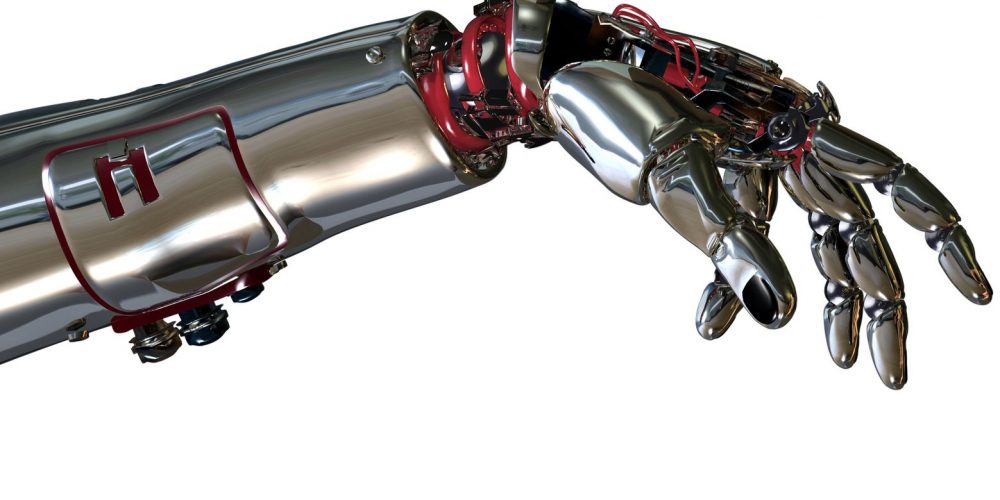Don’t believe the hype!
The current narrative about automation is well known. Weekly, if not daily, commentaries and reports emerge that forecast the potential for the mass displacement of workers as a result of impending automation.
To a degree this is new wine in old bottles. Automation manias have been a regular feature of life in capitalist society. Of course contemporary believers retort by acknowledging this long-standing tendency but emphasise that this time it is different: the technology is completely unlike what has come before and is unprecedented in scale and scope, potential and possibilities.
Yet it is hardly a surprise that adherents of the current bout of automation mania would claim this. Their narrative is not being produced in a vacuum: it is being manufactured by individuals and organisations with a product to peddle, whether this is American academics with books to sell (and lucrative speaker fees to attract), consultancy or software firms like Deloitte and Adobe with “expert” knowledge and products to push, or newspapers with dramatic headlines (“click bait”) to profit from.
Of course, just because some people profit from a message does not mean the message itself is inherently wrong. Maybe a robot is coming to take your job ten, fifteen or twenty years from now. Yet think about the following: whether a robot is about to take your job or not depends entirely on the investment decisions of privately owned capitalist firms. When you read a report claiming that 48 per cent of existing jobs in the north-east of England will be eliminated in twenty years because of new technology,* such analysis implicitly assumes that we can reliably project what the investment decisions of privately owned capitalist firms are going to be twenty years from now.
If this is so, such commentators have tapped into a hitherto unknown form of insight on the workings of the capitalist market. A regular reader of the financial and business press will know that it is difficult to determine what the investment decisions of privately owned firms are going to be six months from now, never mind two or three decades!
Whatever doubts we might have about the validity of forecasting, analysis of this type also misunderstands the context in which technology is developed. For example, if we accept the notion, common in some Marxian circles, that major branches of contemporary capitalism are subject to the logic of “financialisation,” then there are strict limits to the incentives for capitalist investors to develop and adopt new forms of technology.
Under conditions where firms are subject to the pressures of making quick, short-term returns for mobile shareholders, investments in technologies, which are significant immediate expenditures and take time to realise, may end up being delayed or thwarted. Indeed the financialisation of IBM is one of the reasons why the company has struggled to compete in its traditional field of activity.²
The incentive structure of financialised capitalism works for the stock market in terms of dividend pay-outs but chokes investment in the real economy (such as investing in new technology), which partly explains why capitalist economies have been mired in low-productivity stagnation. It is also why many employers favour cheap and disposable labour (of which there is a lot around right now) rather than risking long-term investments in technology.
Ultimately, the evolution of technology in a capitalist economy is not unbounded or unlimited. If a technology jeopardises profitable accumulation by the owners of capital, then it gets blocked by capital.
Here again the celebration of the marvels of new technology and the technical possibilities such developments entail is entirely disconnected from the realities of the capitalist economy. What is possible at the level of technical engineering is not necessarily translatable to the realm of economics, capitalist-style. Undoubtedly Apple could engineer phones that are longer-lasting and more easily repairable, but the logic of Apple shareholders dictates that such engineering would damage dividends, and therefore such phones don’t get made. As Marx would put it, the social relations of production act as a fetter on the forces of production in capitalism.
Leaving aside doubts about the potential for automation, let’s assume for the moment that a robot is really coming to take your job, as newspaper editors would like us to believe (or more probably, for reasons of social control perhaps, to fear). It implies, as does much of the wider narrative, that whether or not your job will be lost to a robot is simply an act of nature. It is “inevitable,” it is just going to happen, and we (workers) just have to “adapt.”
A simple example. Assume some workers in a factory working 38 hours a week. A new machine is introduced by their employer, allowing the workers to be twice as productive as before, i.e. that in 19 hours they can produce the same amount of stuff that previously took 38 hours. Two options are presented. The first: the employer can fire half the workers, because they are now surplus to his requirements. With the remaining work force and the new machine he gets the same output, for which he can charge the same price and bring in the same income. The difference is that there is now one half of the work force to whom the employer does not need to pay wages any more, because they have just been fired. Money saved on wages goes to profits.
But whether or not a robot takes your job is not the same as asking whether or not Dublin will be hit by a tsunami. The adoption of technology in the work-place is not an uncontrollable act of nature: it is purely a political question that depends on the balance of power between capitalists and workers. It is not technology that threatens jobs: it is employers who control and use technological change to increase profits.
However, a second option with the new machine could theoretically occur. This is where, upon the introduction of the machinery, all the workers who work 38 hours a week are immediately told they can now work 19 hours. So the employer gets the same number of workers working 19 hours with the new machine, producing exactly as much as before. Working 19 hours with the new machine, the workers produce the same amount of stuff as before, for the same price, with the same wages, bringing in the same income and making the same profits.
Option 2 will not improve the employer’s profits, but it won’t lessen them either. In effect, option 1 bring the benefits of technological change to the capitalist (increased profit), while option 2 brings the benefits of technological change to the workers (increased non-labour time, with no decline in wages). Technology permits this choice, but the social structure of capitalism tends to deny it.
And so it is the social relations of capitalist production, not automation per se, that should be worrying people.
1. See “UK’s poorest to fare worst in age of automation, think-tank warns,” Guardian (London), 28 December 2017.
2. See “Why IBM is in decline,” Forbes Online, May 2014.






